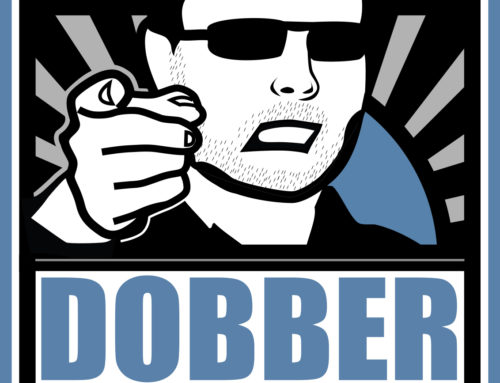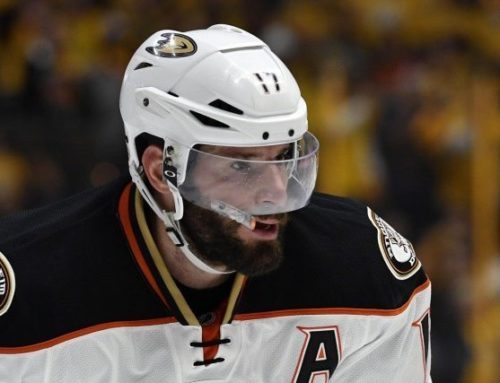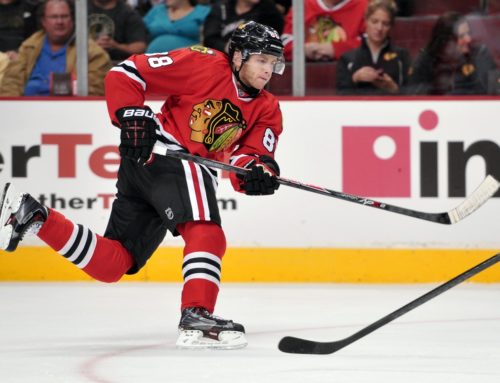2010 – A Fantasy Hockey Year in Review
Jeff Angus
2010-12-31

2010 was one of the better years in recent memory in terms of hockey. We had the Winter Olympics, where the stars came out to play over an unforgettable two weeks in February. John Carlson became an American hockey legend with a gold-medal winning overtime goal in the World Juniors. We had the Windsor Spitfires, stacked to the brim with future NHL talent, run through the CHL en route to a second-consecutive Memorial Cup title. We also had the deep, young, and exciting Chicago Blackhawks capture the greatest trophy in professional sports, the Stanley Cup.
In the fantasy hockey world, a lot happened as well. The "big three" (Crosby, Ovechkin, and Malkin) became the "big four" (Stamkos) for a while, but that was quickly replaced by the "big one," as Crosby took the Penguins on his back for a wild 25 game ride. The Sedin twins showed that not all players are finished developing in their late 20’s by taking the leap to superstardom at the age of 29. We saw a rise in the number of teams opting to go with the two-headed goalie attack. Ilya Kovalchuk was the story maker of the 2010 offseason, and the fallout has been an interesting saga to say the least. Let's get to it…
10. The Price is right, after all.
Hindsight is 20/20, which makes writing year-in-review pieces very nice. Montreal was lambasted for trading playoff hero Jaroslav Halak this summer. Carey Price had struggled under the enormous pressures faced in Montreal for the past two years, and he showed no signs of breaking through last season. The Habs had a hunch he would turn things around. Throughout his career, Price has been praised for his mental toughness. He has the Grant Fuhr mentality – it doesn't matter if you stop every shot as long as you find a way to get the win.
Price dominated the AHL as a rookie, and he rose way ahead of schedule to the NHL. His hot start at the top level created unrealistic and unattainable expectations in the minds of many, and he was being set up by himself to fail. Halak taking the starting spot away was a wakeup call. Being handed the starting spot back this summer after failing to earn it was probably a bigger one, though.
9. Washington's shifting philosophy.
After another playoff disappointment, the Capitals vowed to change their team style heading in to 2010-11. The high-octane offense was effective during the regular season, but in the playoffs, Washington struggled to battle through the stifling checking and sublime goaltending possessed by the Montreal Canadiens. You can bet more than a few Capitals were doing a happy dance upon hearing about the Halak-to-St. Louis trade news in the summer.
We are approximately halfway through the season, and the results in Washington have been mixed. Mike Green is struggling, as his risky offensive style has been dialled back. Trying to restrain Green is foolish – let your Ferrari’s be your Ferrari’s. Alex Ovechkin has unpurposely morphed into a playmaker – he seems to be playing with less confidence than in years past. The Capitals finished last season 16th in goals allowed, and they currently sit 11th in that category – a small success. However, this is a team that really be placed under the microscope until April.
For poolies, this shift has hurt. The Capitals scored 3.82 goals-per-game last year, good for first in the league. This season, they sit 10th at 2.95. How a team plays obviously has a huge impact on how its respective players produce, and Washington's quick change is a perfect example of this.
8. The other Steve in Tampa Bay.
Steve Downie has been a household name (mostly for the wrong reasons) ever since his days as an elite scorer/agitator/psychopath (depending on your stance) in the OHL. He was traded from Philadelphia two years ago, which surprised many. Downie seemed to posses many of the traits – grit, skill, a nasty edge, and a toothless smile – that screamed 'Broad Street Bully.' However, he seemed to cause his team more harm than good whenever he stepped over the boards.
In Tampa Bay, he found a mentor in Rick Tocchet, and a home alongside Steven Stamkos and Martin St. Louis on the top line. Tocchet saw in a lot of himself in Downie – the potential for the combination of physicality and offense. Poolies saw a potential multi-category stud – Downie could fill up the score sheet in a variety of ways. They weren't disappointed. Last season, he was the first player in almost a decade to score at least 20 goals and record over 200 penalty minutes.
He's been battling injury this season, but Downie has firmly entrenched himself as one of the best young multi-purpose players to own in all league formats (assuming he sticks on the top line, of course).
7. The fall and rise of Tim Thomas.
Fresh off of his first Vezina Trophy in the summer of 2009, Tim Thomas was ready to lead the Bruins for the foreseeable future. However, inconsistent play combined with a few injuries derailed his season. Unfortunately for him (and fortunately for the Bruins), rookie Tuukka Rask was ready for the spotlight. The talented Finn emerged as one of the best in the league last season. The Bruins appeared to be stuck with Thomas and his massive contract. There were rumours that they tried to move him without success over the summer. However, Thomas started the season in Boston, backing up Rask. He seemed more focused than he did last season, and he looked every bit the goalie that was the league's best in 2008-09.
Rask didn't struggle, but he couldn't keep up with the ridiculous level of play Thomas was bringing on a nightly basis. Poolies who drafted Rask or didn't draft other goalies because of him were panicking, while those who stuck with Thomas were being rewarded for their patience. Thomas is the quintessential underdog – he starred in Europe but never got his break in the NHL until the age of 30. If sports have taught us anything, it is to never count out the underdog.
6. Edmonton's embarrassment of (prospect) riches.
Many poolies were drooling at the prospects (pun) of owning one or all of the trio of young players in Edmonton – Magnus Paajarvi, Jordan Eberle, and Taylor Hall. Edmonton started with all three on the main roster. To date, there have been highs and lows, as to be expected with first-year players. Some (myself, included) wondered aloud if Edmonton should perhaps opt for more of a Detroit approach – take their time with the development. Developing in a losing environment is not something to ignore.
Look at Anaheim – they took their time with Getzlaf and Perry (the lockout helped, mind you). They were also a great team when the duo broke through, and they played limited and sheltered minutes. One of my fantasy hockey philosophies is to avoid getting caught up in the hype and excitement that surrounds young and unproven talent. In the short-term, you have to deal with inconsistencies. In the long-term, the risk of improper development arises. Edmonton's trio is too collectively talented to bust or flop, but they may not hit their respective peaks for a while yet.
5. The year of Dustin.
Dustin Byfuglien is a man of many personas. Last spring, he starred as the big, bad, Roberto-Luongo-nightmare-inducing net presence on Chicago's top line and first power play unit. This season, he has starred as one of the league's most dominant defensemen for Atlanta. Funny how so much can change in a few months.
Byfuglien's natural position growing up was always defense. He is a very fluid skater in both directions, he has a huge slap shot, and he thinks the game well. With the rules in today's game, he becomes an unstoppable force on the rush. Many hockey people questioned why Atlanta would move Byfuglien away from a role he was growing so dominant at (right wing) to one that appeared to be a relative strength for the team (defense).
Byfuglien has been everything anyone in Atlanta could have hoped for. As a fantasy hockey player, he's been a monster. Goals, power play points, assists, shots on goal, he is doing it all. The funny thing – I drafted him two years ago with the hopes of getting his forward production out of a defense position (he was listed as a F/D on Yahoo, even though he played forward exclusively). This year, Byfuglien is doing that exact thing in real life – forward production (on pace for 29 goals and 80 points) out of a defense position (averaging 22:35 of ice time per game).
4. Ovechkin, Crosby… and Sedin?
The Sedin twins had developed into solid players in both real life and fantasy hockey. They seemed to be settling in as consistent and reliable point-a-game players for the Canucks. That all changed this year, though. Henrik won the Art Ross and Hart Trophies. Daniel was right behind him in terms of per-game production (he missed 18 games with a broken foot). This season, the dynamic duo picked up right where they left off last season, even without their third wheel (Alex Burrows) for the beginning of the season.
It is rare for a player (in this case, two) to increase production by 30 points at the age of 29. It is even rarer that such a dramatic increase in production would happen immediately after signing a massive contract extension. The Sedin twins are superstars, and they are here to stay.
3. Seen Stamkos?
Speak of dramatic offensive production increases…. Stamkos went from struggling rookie to arguably the league's most feared sniper in a little over a calendar year. Much was made of his offseason training regimen with Gary Roberts. Physical and mental preparation had a lot to do with it, but a former Hart-winning sidekick played a big part as well. Martin St. Louis is the most underrated superstar in the game, and he still fails to receive the credit and praise he deserves. But this is about Stamkos. In addition to looking like Spicoli, Stamkos skates like a young Mike Modano and shoots the puck like Brett Hull.
Much has been made of the Stamkos vs. Evgeni Malkin debate here at DobberHockey recently. I'd take Malkin in most league formats, but it is a close comparison. The downside to the monster sophomore year put up by Stamkos? He now becomes the measuring stick for 1st overall picks.
They say insanity is doing the same thing over and over again and expecting different results. Teams that continue to give Stamkos his now-patented one-timer shot from the high slot should have been checked into the asylum long ago. I have mentioned this a lot, so ad the risk of sounding like a broken record, I am continually baffled at the success Stamkos experiences from his favourite spot on the ice. It goes to show at how dangerous his shot is. Teams know exactly what is going to happen, but they still can't do a thing to stop it.
This isn't exactly his hot spot, but I wanted to show the video anyway. Check out the ridiculous pass by Vincent Lecavalier:
2. Summer 2010: Koval-gate.
The MVP of last summer may be Los Angeles GM Dean Lombardi, who failed to cave to the exorbitant demands of Ilya Kovalchuk and his agent. Kovalchuk was acquired by New Jersey last year from Atlanta for a hefty price. He ended up costing the Devils considerably more, in the form of a $100 million dollar extension and a cap-circumvention penalty to boot. He's been a poor fit for a team that desperately needs to rebuild. Looking at New Jersey's roster, their three best forwards (when healthy) are all left wingers. They are slow up front. On the back end, they lack mobility and offensive ability, a crucial element for any team in today's game. In goal, Martin Brodeur looks to have aged about 50 years over the past summer.
Kovalchuk can't be blamed for all of these things (although some may disagree), but he has fairly/unfairly become the beacon for futility in the Garden State. As a poolie, I'd advise buying low. Why? Because this is a former 50-goal scorer who is still on the right side of 30. In the salary cap era, a proper rebuild can be done in about three seasons.
It's funny how much attention is given to the top free agents, but it is always the depth/role signings that end up providing the most value. You can't build a winner through free agency, as Brian Burke has found out in Toronto.
1. Crosby raises the bar.
Where were you when "the goal" was scored? No player needed to score the Olympic-winning goal than Crosby, and no player wanted it more. There is no more Crosby or Ovechkin. The debate is done, buried, and finished. Crosby has taken his game to another level – he's dominating the league in a way that no player has since Dominik Hasek did in the late 1990's. Crosby simply does everything at an extremely elite level.
He defines the "it" factor. Like Wayne Gretzky, he thinks three plays ahead of his linemates and the opposition. He was criticized for being too passive offensively, so he went out and scored 51 goals last season (and another 32 to finish off 2010 this season). Words can't even describe some of the things he does on a nightly basis. I love comparing players to former greats, as we all do. With Crosby, the closest stylistic comparison is a healthy Peter Forsberg. Now with his goal scoring prowess, the comparison may have to be altered a bit. He shares Mark Messier's will to win, and as Penguin fans can attest to, Pavel Bure's ability to create magic every single shift.
Sidney Crosby is easily the most important player in fantasy hockey over the past 12 months. I guarantee this is a statement that will be repeated many times over the next decade.





 BUF
BUF N.J
N.J PHI
PHI MIN
MIN WPG
WPG VAN
VAN TOR
TOR CGY
CGY MTL
MTL